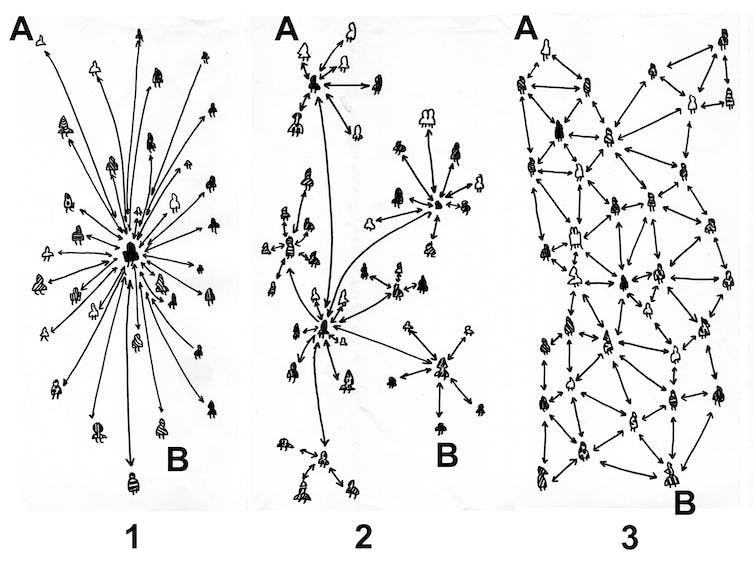
Curious Kids is a series for children of all ages. If you have a question you’d like an expert to answer, send it to [email protected].
What exactly is the internet? Nora, age 8, Akron, Ohio
The internet is a global collection of computers that know how to send messages to one another. Practically everything connected to the internet is indeed a computer – or has one “baked inside” of it.
In the early 1960s, computers were used only for special purposes, like scientific research. There weren’t a lot of them because they were large and expensive. One computer and its attached accessories could easily fill a room. To exchange data, people would plan time to work together, and one computer would connect to another with a telephone call.
The U.S. government wanted a network that would allow computers to communicate automatically and even if some telephone lines were cut off. Suppose you wanted to send a message from Computer A to Computer B in each of three different types of networks. The first is a network with one central computer connected to all the others as spokes. The second is a network of several of these hub-and-spoke networks with their hubs connected. The third is a network where every computer is connected to several others, forming a kind of mesh. Which do you think would be most reliable if some computers and links were damaged?

To get a message from A to B, which type of network is most likely to keep working if some of the lines are cut?
Txelu Balboa via Wikimedia Commons, CC BY-SA
The first network is vulnerable, because if the central computer is lost, then none of the computers can communicate. The second network is vulnerable because if any of the hub computers are lost, the path between A and B is cut. But in the third network, many individual computers and links could be lost and there would still be a path to connect A and B. So the third network would be the most reliable.
Hot potatoes
An American engineer named Paul Baran worked on this problem at a company called the Rand Corp. In 1962, he published a new idea for computer networks, which he called “hot potato networking.”
In Baran’s idea, a message would be broken up into lots of little pieces – the potatoes. When Computer A wanted to sent its message to Computer B, it would individually send the little potatoes to a neighbor computer. That computer would pass it along in the right direction as soon as it could. To make sure messages were delivered quickly, the message pieces were treated as if they were hot, so you didn’t want them in your hands for too long.
The messages included a sequence number so when they arrived at Computer B, the final destination computer, that machine would know how to put them in the proper order to receive the full message.
Baran’s idea got implemented as the ARPANET. This network was the immediate…


